Command Lapses Could Rule Matt Stites Out for 2015 Bullpen
When (former!) GM Kevin Towers moved struggling starter Ian Kennedy before the trade deadline in 2013, he obtained a player that filled a need in a contending team’s bullpen: Joe Thatcher. But Matt Stites also came over in the trade to Arizona to even out the value in the trade, and so far, his 6.11 ERA in 28 innings have left something to be desired. Stites certainly has not been quite as bad as the ERA would suggest, but if you think of 4.79 as replacement level, neither his Fielding-Independent Pitching mark (5.69) or his 4.51 SIERA make him look good.
It’s more than a little unfair to pick on Stites just after a stinker performance yesterday in San Francisco (0.2 IP, 3 hits, 3 walks, 3 ER), but now that he’s been with the club for nearly a half season, we can start to draw some conclusions about who he is now and who he might be in 2015.
Assuming Towers no longer has enough influence to successfully campaign for a veteran free agent reliever this offseason, most members of the 2015 bullpen appear set. There’s Addison Reed, who’s going nowhere (and not necessarily nowhere fast, as he’s done well lately). Oliver Perez is also likely to have a featured role. All Evan Marshall has done is improve this season, and the D-backs would be hard pressed to leave him out in the spring. Randall Delgado and (less likely) Josh Collmenter could also end up with spots in a 7-man relief crew, and there’s a good chance Daniel Hudson will at least start the 2015 in the bullpen. Another lefty is also likely to make the bullpen to start the season, whether it’s a free agent, a suddenly effective Eury De la Rosa, a returning Matt Reynolds, or a converted Andrew Chafin.
Brad Ziegler may be more of a dice roll at this point, unfortunately. His recent knee surgery involved microfracture, a procedure only undertaken if there is a part of the bone in the knee joint that’s completely missing cartilage. Surgeons use microfractures — really, punctures of the bone — to get some stem cells in the bone to ooze out and form kind of a fake (and not nearly as effective) cartilage. What’s worse, some surgeons believe that the procedure can make it more difficult to use allografts (grafts of cartilage from the same person’s body) to make up for the lost cartilage down the road. From injury analyst and friend of the site Stuart Wallace:
.@InsidetheZona Yes – the biggest comp for Ziegler will probably be Derek Holland and his return. Tough break for him and the #Dbacks
— Stuart Wallace (@TClippardsSpecs) September 10, 2014
Still, with Reed, Perez and Marshall having locked down spots, and with Hudson, Delgado, a lefty and probably Ziegler penciled in for 2015 Opening Day, someone who might be deserving of a spot could be left pitching for Triple-A Reno.
It’s possible that both De la Rosa and Reynolds could be in the mix, with Bo Schultz also expected to stay with the major league club in the spring at least until the team’s final cuts. Will Harris has also been better (3.49 FIP) than his bad-luck 5.18 ERA this season would indicate, and Jake Barrett will most likely be ready to contribute. Add to that the possibility that Archie Bradley or a free agent starter could push someone like Vidal Nuno or Chase Anderson out of the rotation…
…and it’s hard to see Matt Stites as a favorite to be in the Chase Field bullpen when the D-backs open the season at home against yesterday’s foes, the San Francisco Giants. It could be that Stites needs to show something in the season’s final weeks.
Fortunately, MLB rules dictate that Paradise Valley High School’s “Bruce” won’t be competition for Stites. After all… well, just look.
Matt Stites may not be having a ton of success right now, but unlike Bruce, he can throw a fastball faster than an Odrisamer Despaigne curveball. In fact, Stites is far and away the hardest thrower to take the mound for the 2014 D-backs.
Of his 481 pitches, Stites has thrown 18 at a velocity of 98 mph or higher. All other D-backs combine for zero other pitches that fast. 51% of Stites’s pitches have been 95 mph or faster — the next-highest percentage on the team is Randall Delgado (6%).
This is really crazy. Despite the limited number of innings he’s pitched, Stites has 248 pitches 95 mph or faster — that’s more than half of the 95 mph or faster pitches thrown by the D-backs this season (53%).
And more and more, Stites has been a fastball hitter. Although about one tenth of his pitches in June and July were changeups (25 of 254), he’s only thrown one since. And for good reason; in July alone, every time that a changeup ended a plate appearance, the hitter got on base (well, does it really count as “on base” if the hitter just trotted around them all on his way back to the plate?).
Stites has stuck with his slider, a pitch that has rated roughly average in terms of pitch value; still, he throws it only 25% of the time or so, a rate that’s actually fairly standard.
The drop in changeup usage has meant an increase in fastball usage for Stites this season, and he’s thrown it 81.5% of the time so far in September (from Brooks Baseball):
The fastball velocity, though, has ticked down just a bit as the season has worn on. He released it at an average speed of 97.27 mph in June, but that speed has declined each month to an average of 96.20 mph in September. One measly mile per hour may not seem like much, but according to sabermetrician MGL, a pitcher’s projection does best if it increased runs per nine (essentially, ERA) by about .3 runs per mph. MGL made that comment with respect to a pitcher who was throwing 96 mph, so I think it may not make a difference whether the pitcher was a hard thrower in the first place.
The error bars in this graph show that even Stites’s max speed in September is no match for the lower end of his velocity in June (again from Brooks Baseball):
39% of Stites’s fastballs have been called for balls this season (more were probably out of the zone, but swung at). From Baseball Savant:
For what it’s worth, when I toggled the velocity limits (without getting too restrictive on sample sizes), the breakdown of events that resulted almost didn’t change at all. There isn’t a whole lot that Stites can do about outcomes from the fastball. He’s hit the middle-middle section of the plate 8.5% of the time this season, and there’s room to say that’s too much — but realistically, that would be tough to change without walking more batters (if you aim for the sides of the plate, it’s going to wonder into the middle sometimes.
Despite his doling out three free passes yesterday, I’m not sure we can call Stites a bad control guy based on walks. Before that appearance, he had a 4.3 BB/9, a rate that is poor for a starting pitcher but not entirely unexpected for a flamethrower in the bullpen.
Still, control can also hurt a pitcher during at bats. That seemed to be on display yesterday, when Stites got ahead of Travis Ishikawa 0-2. Here was the first pitch:
That was called a strike, maybe with no help from Tuffy Gosewisch, whose receiving looked a little too busy yesterday. Compared to where the glove was originally set up, it looks like Stites only barely missed. On the next pitch, however, Stites was asked to sneak one up and in, only to see the fastball fly open and away from Ishikawa:
That’s one way to do it. And so after two pitches, Stites was in a commanding position. But that’s when the wheels started to come off.
Ishikawa fouled off a 96 mph heater up in the zone, but watch what happened on the fourth pitch:
Woof. The fifth pitch was a slider that Gosewisch wanted under the middle of the strike zone — but Ishikawa was never tempted to swing, because the pitch ended up being something Ishikawa could more easily shuffle-kick than put his bat on.
With the count even, Ishikawa then fouled off a pretty good fastball up and away. Finally, Stites made another good pitch at a spot Gosewisch kept calling over and over and over: low and away with the fastball. Stites would have hit the glove, if the ball hadn’t started moving in the opposite direction.
In this at bat, Stites aimed the ball successfully four times, and three times missed the glove completely. The first of those three put him ahead in the count 0-2 because it missed over the plate and Ishikawa swung. But the other two? They were so far off the plate that there was virtually no chance of Ishikawa swinging.
Based on a review of his last few appearances, that seems like a Stites theme. It seems that either Stites gets close to the glove with his pitches (especially fastballs), or… he just doesn’t, at all. There aren’t too many times that he misses by a foot. He misses by six inches or less (just eyeballing it here), or he misses by two feet. Could it be a grip issue?
Let’s hope so, because that means it could be fixable. Either way, Matt Stites is running out of time this season to make a strong bid to stay with the major league team in 2015. Whether he makes the necessary improvements could have huge implications for the 2015 season, because giving opposing teams different looks is absolutely a thing — and the D-backs don’t currently have anyone else like him.
6 Responses to Command Lapses Could Rule Matt Stites Out for 2015 Bullpen
Leave a Reply Cancel reply
Recent Posts
@ryanpmorrison
 Best part of Peralta’s 108 mph fliner over the fence, IMHO: that he got that much leverage despite scooping it out… https://t.co/ivBrl76adF, Apr 08
Best part of Peralta’s 108 mph fliner over the fence, IMHO: that he got that much leverage despite scooping it out… https://t.co/ivBrl76adF, Apr 08 RT @OutfieldGrass24: If you're bored of watching Patrick Corbin get dudes out, you can check out my latest for @TheAthleticAZ. https://t.co/k1DymgY7zO, Apr 04
RT @OutfieldGrass24: If you're bored of watching Patrick Corbin get dudes out, you can check out my latest for @TheAthleticAZ. https://t.co/k1DymgY7zO, Apr 04 Of course, they may have overtaken the league lead for outs on the bases just now, also...
But in 2017, Arizona ha… https://t.co/38MBrr2D4b, Apr 04
Of course, they may have overtaken the league lead for outs on the bases just now, also...
But in 2017, Arizona ha… https://t.co/38MBrr2D4b, Apr 04 Prior to the games today, there had only been 5 steals of 3rd this season (and no CS) in the National League. The… https://t.co/gVVL84vPQ5, Apr 04
Prior to the games today, there had only been 5 steals of 3rd this season (and no CS) in the National League. The… https://t.co/gVVL84vPQ5, Apr 04 RT @OutfieldGrass24: Patrick Corbin has a WPA of .318 and it's only the fifth inning., Apr 04
RT @OutfieldGrass24: Patrick Corbin has a WPA of .318 and it's only the fifth inning., Apr 04
Powered by: Web Designers@outfieldgrass24
 Old friend alert https://t.co/xwSHU0F8Hn, 2 hours ago
Old friend alert https://t.co/xwSHU0F8Hn, 2 hours ago Every once in a while you get a beer that's just a little off... Usually happens to me at airports., 7 hours ago
Every once in a while you get a beer that's just a little off... Usually happens to me at airports., 7 hours ago If Pollock doesn’t sign with a team that wears red uniforms I’m going to be really disappointed. Working theory: Se… https://t.co/zHn9DqzEiD, 9 hours ago
If Pollock doesn’t sign with a team that wears red uniforms I’m going to be really disappointed. Working theory: Se… https://t.co/zHn9DqzEiD, 9 hours ago The work here by @Britt_Ghiroli is splendid https://t.co/c8tSq0vw3T, 9 hours ago
The work here by @Britt_Ghiroli is splendid https://t.co/c8tSq0vw3T, 9 hours ago RT @TheAthleticAZ: Plenty of #Dbacks fans gave it some time - and they still don't like the idea. The "why" from @ZHBuchanan
https://t.co/9oDlvue3fV, 18 hours ago
RT @TheAthleticAZ: Plenty of #Dbacks fans gave it some time - and they still don't like the idea. The "why" from @ZHBuchanan
https://t.co/9oDlvue3fV, 18 hours ago
Powered by: Web Designers

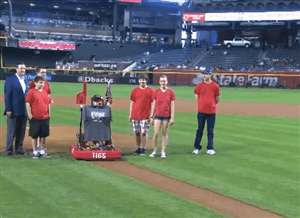
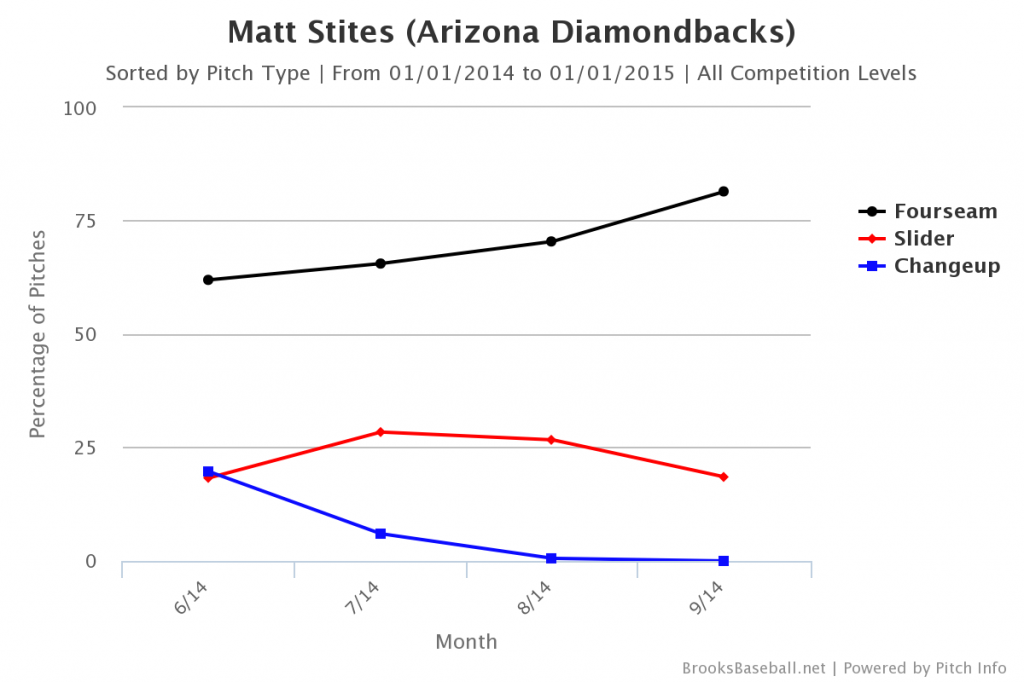
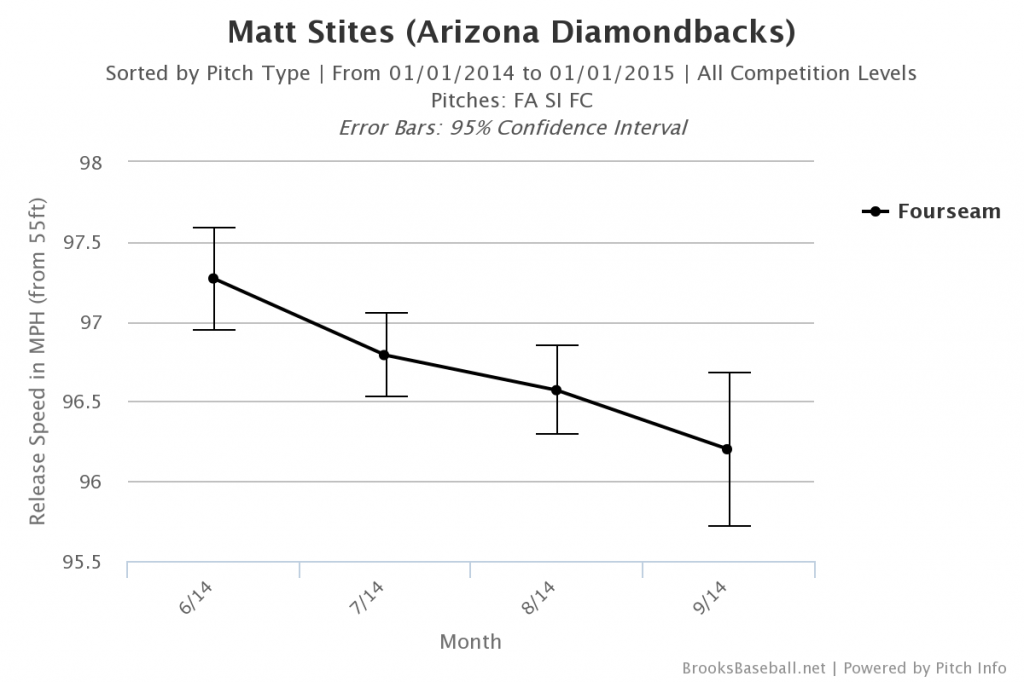
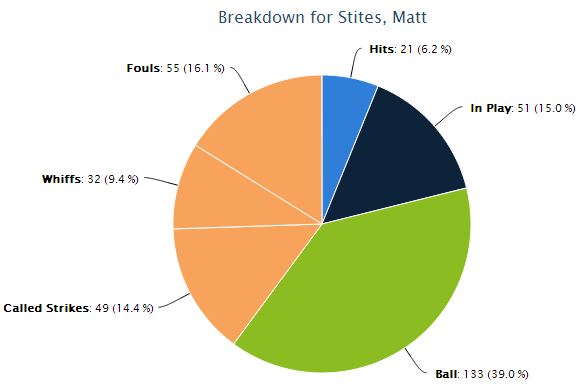
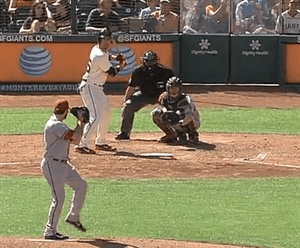
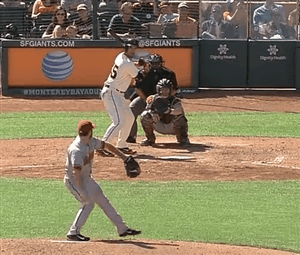


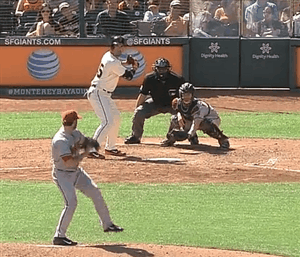




So watching that AB to Ishikawa got me thinking: Stites has heat and made no attempt to come inside on Ishikawa with it. I know the batter has some power, but Ishikawa is not a feared hitter. You can’t make major mistakes to him, but this isn’t Miguel Cabrera here.
I started looking at his heat maps to see if Stites comes inside often. Unsurprisingly, he doesn’t come inside on lefties often as they have the platoon advantage. This isn’t uncommon, but something that can be very effective, considering he gets some run on his fastball. He may be able to start it inside and run it in on the corner from time to time. That or break bats.
To righties he does the same thing. It’s all away. Here he has the stuff and the platoon advantage, but neglects the inside part of the plate. Why? I’m not sure, but establishing the inner half of the plate would seem to be helpful to keep the hitter guessing and from leaning out over the plate.
Here are his heat maps, where you can toggle between LHH and RHH at the top: http://www.brooksbaseball.net/profile.php?player=592781&gFilt=&pFilt=FA
Simply, against Stites, it looks like hitters can just look for something away, and if he doesn’t get it way out there, they can really punish the ball as it may catch too much of the plate.
I’m not sure how different this is for most relievers, but I can’t imagine being able to effectively throw inside could be bad in any way.
That’s really interesting — sequencing could definitely have a lot to do with it. Or (shock!) a bad D-backs game plan for him. Tuffy can’t have been on his own there.
One thing that could make pitching at that part of the zone is that Stites has a lot of arm-side run on his fastball (about 4.5 inches). So he’d have to aim it off the plate, which is doable, but not that customary. And if he missed, it’d be a pretty fat meatball considering his inconsistency. Maybe the thought is: if Stites is going to have command issues with the fastball, best to have the bad ones be unhittable instead of the middle of the plate.
Anyway, Ishikawa did swing and miss on a fastball for which Tuffy had set up up and in (it’s GIF 2). So maybe you’re onto something there.
This is almost surely the logic: “if Stites is going to have command issues with the fastball, best to have the bad ones be unhittable instead of the middle of the plate.”
That said, elite pitchers in any role can do both and if he can’t get comfortable with his fastball command, it’s going to a bumpy road for him no matter what. I’ll try to watch his mechanics a little more closely and see if there’s anything that can be cleaned up.
I think you said it – if he can’t command his fastball, he’s not going to be very useful at this level. How does he profile compared to David Hernandez? I know that David had an excellent season in 2012 before stinking it up in 2013 (and then injured this year), but it seems like they’re very similar, with David having some track record. But both are flamethrowers with command issues, and it makes me wonder whether throwing it so fast just lends itself to some wildness. It sounds odd, but it seems like there are guys with easy speed (natural) while it looks like some guys adjust mechanically to throw faster and look more wild.
Yeah, his slider isn’t consistent up here. His fastball is tough against lefties because they tend to want to pull it, and runs away a little, a good thing against lefties, a bad thing against righties, especially if guys are getting looks at all his stuff, and his wind up. He leaves it up, and loses an inch and it tails back over, that’s his hr rate right there. Now against right hander his good fastball on the lower half away is unhittable. Commanding a better slider and cu, or forkball he’s be real filthy against rh. His fingers big and strong enough? If he developed a fork ball he could be a starter.
This talk may come flying back at ya twofold